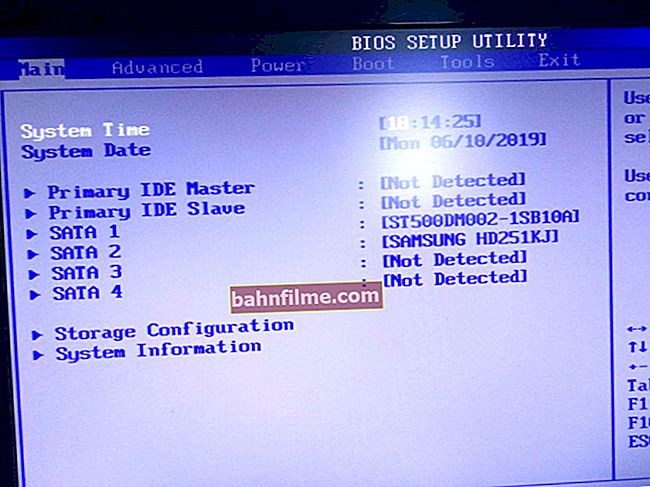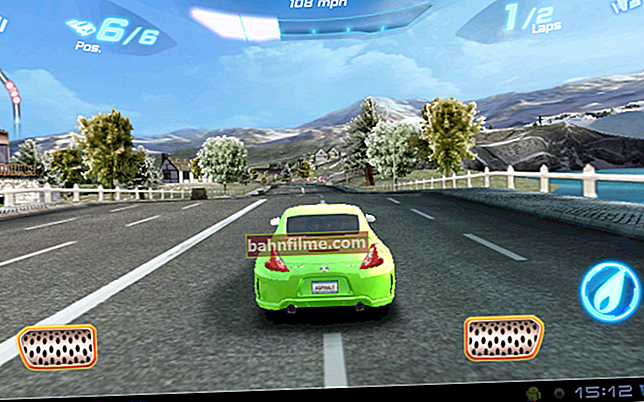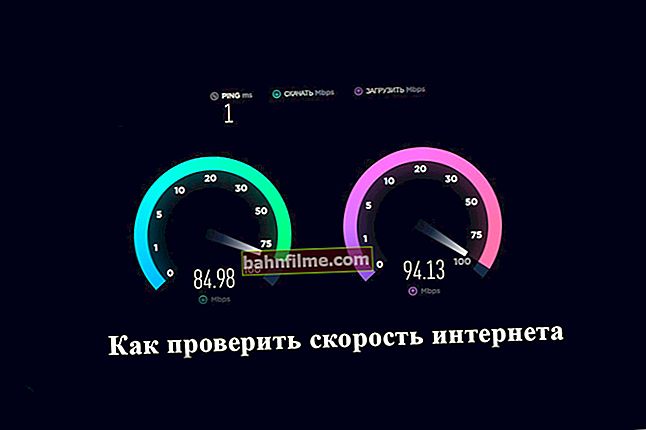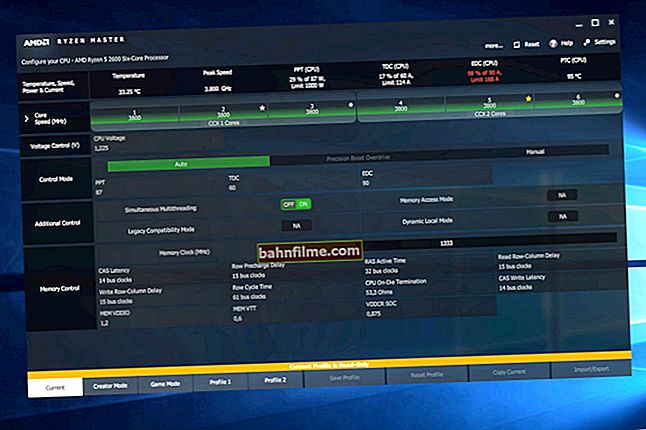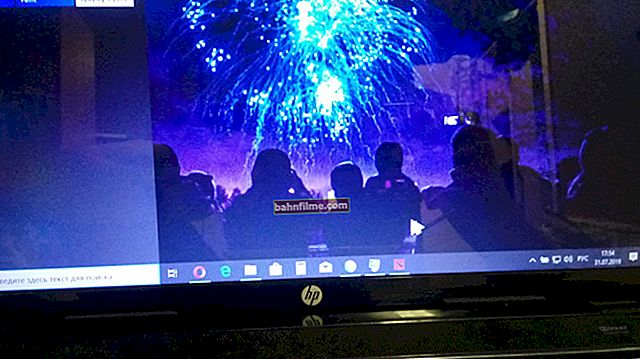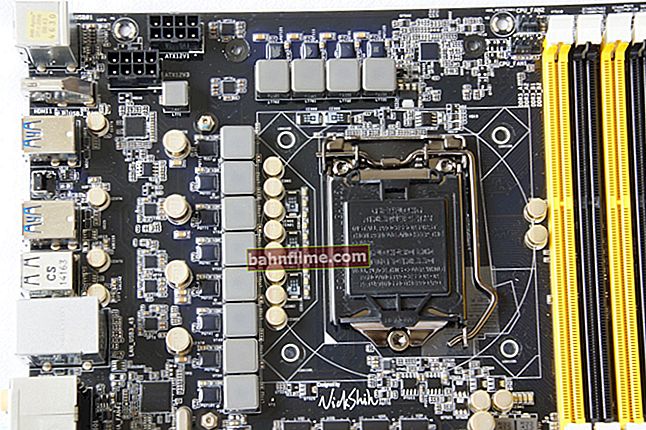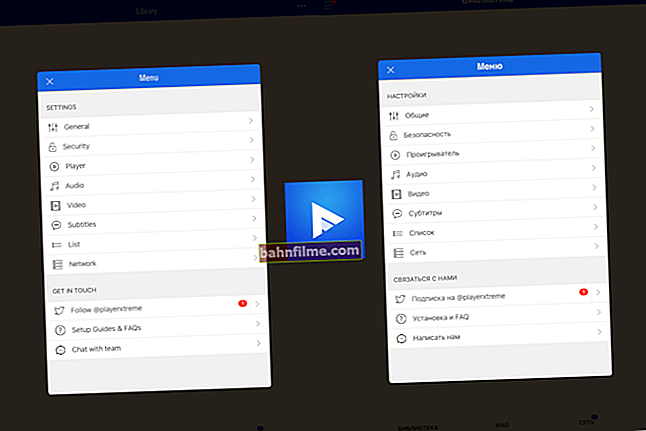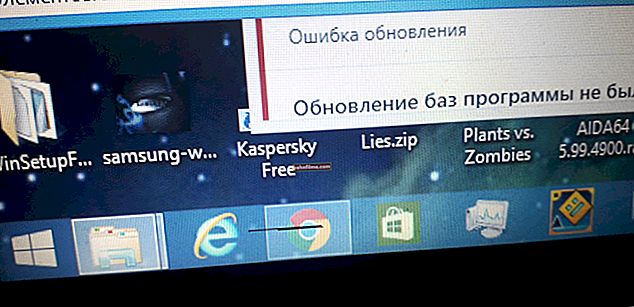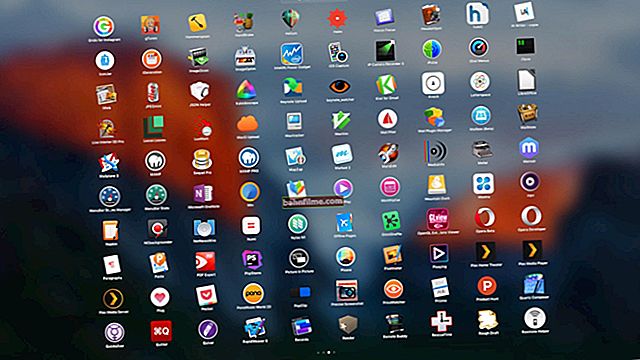
User question
Hello.
I want to completely delete all content on the disk, and then reinstall the system. I have two drives ("C:" and "D:") - I was able to format one, but the problem with the "C:" drive. Can you tell me how you can format the system hard drive (on which Windows 8 is installed)?
Good day!
In general, on today's modern system, starting disk formatting is not a difficult operation, I would even say simple (not what it was 20 years ago).
Perhaps, questions arise only in cases when Windows does not see the disk, errors appear during formatting, or when you try to format the system disk (as in your case).
In the article below I will analyze several formatting methods - depending on your tasks and specific problem, select the one you need.
So...
👉 Important!
After formatting the drive, all information on it will be deleted! Make a copy of the necessary files from the disk to third-party media in advance.
*
Ways to format the hard drive
From under Windows
Via My Computer
Probably the classic and easiest way to format a disk is to go to "My Computer" (or "This Computer", depending on the version of your OS), find the desired disk partition in it. Then select this section, right-click on it and select the required one in the context menu (i.e. formatting, see the screenshot below).
Note: if the icon "My computer" is not on the desktop, and you do not know how to open it - press the button combination WIN + E - the explorer will open: on the left in the menu, select the link to "My computer / This computer".

Format disk // This computer // Windows 10
Next, a window should open in which the basic settings are set:
- file system: FAT 32, NTFS, exFAT, etc. In most cases, the best option for a hard disk is to use NTFS;
- allocation unit size: 4096 bytes (the best option);
- volume label: the name of the disk, you can enter any (I recommend using the Latin alphabet, because some programs do not read the Russian font correctly).

Settings when formatting the drive
In general, the default settings are usually suitable for most users - you can immediately click the button "To begin" ... In a few minutes you will get a "blank" disk ...
*
Through disk management
In those cases when you went to "My Computer", and it simply does not see your connected disk (this often happens with new disks that have not been formatted), then you need to use either special utilities or use the tool "disk management" built into Windows.
To open Disk Management, you need:
- press a combination of buttons WIN + Rto open the window "Run" ;
- enter command diskmgmt.msc and press Enter. The application should open "Disk Management" .
Further you will see not only all connected disks, flash drives, memory cards, etc., but also which partitions were created on them - i.e. the whole structure. Select the desired section, and right-click on it - in the context menu, click on the item "Format..." (see the red arrows in the screenshot below).

Disk Management - Selecting a Partition to Format
Next, you will need to specify the volume label (that is, the name of the disk), file system and cluster size. Then agree with the operation being carried out. Everything!

File system selection, volume name
*
Through the command line
In cases where the explorer freezes (for example), also in the case of various kinds of errors, you can try to format the disk through the 👉 command line.
First you need to open it as an administrator. For this:
- open the task manager (the combination of buttons Ctrl + Shift + Esc );
- then press file / new task ;
- enter in the line "Open"CMD, select the checkbox to have the task with administrator rights and press Enter.A command prompt should open.
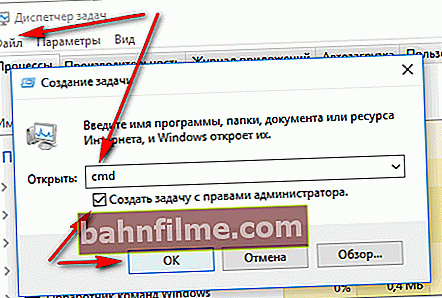
Command line as administrator
Further you must enter the command:
format G: / FS: NTFS / q
WHERE:
G: - the letter of the drive to be formatted (specify carefully!);
/ FS: NTFS - select a file system;
/ q - fast formatting.

Formatting the G drive on the command line
Basically, the disk needs to be formatted.
In Windows 10, by the way, a small "error" may appear - the system will ask you to specify the volume label for the disk, and then it will write that "Invalid disk label specified" (although you seem to have indicated everything correctly, the example is below).

Enter volume label - Invalid disk label specified
In this case, do the following ...
First open in a command line the drive you want to format, for example, a drive G: (see screenshot below).

Selecting a drive on the command line
Next, write the command vol and press Enter. This will give you the disk label and serial number of the volume. (In my case, the disk label is "Windows 8", without quotes).

Team VOL - look at the volume label
Next, enter the formatting command again, and in the disk label field - the label that we recognized in the previous step (in my case - Windows 8). Next, you will be warned that all data will be destroyed during formatting (agree by entering y and pressing Enter ).
In the next step, you will be prompted to enter a volume label - now you can specify any name (32 characters). You can just leave the field blank by pressing Enter. Actually, that's it - the disk will be formatted (screen below).

Formatting finished
*
With the help of specials. utilities
👉 To help! The best programs and utilities for working with your hard drive.
Now there are hundreds of different programs and utilities for working with hard drives. Operations such as formatting, splitting, defragmentation, and so on can be done in more convenient programs than those built into Windows. The link to the article with the best of them is given above.
In my opinion, one of those that deserves attention is AOMEI Partition Assistant.
AOMEI Partition Assistant
Official website: //www.disk-partition.com/free-partition-manager.html
It allows you to quickly, safely, and easily carry out the most necessary operations with disk drives:
- resize their partitions (including formatting);
- move partitions;
- merge sections;
- format drives;
- change labels and more!

AOMEI Partition Assistant - what can be done with a disk partition
What else is captivating, the program has many different step-by-step wizards - they will help solve the problem even for those users who have only recently got acquainted with a PC. Well, for example, you can convert the FAT 32 file system to NTFS without losing data, transfer Windows from your hard drive to a new-fangled SSD, etc.
In general, I recommend it!
*
Via BIOS
(for formatting system partitions, for example, on which Windows is installed)
If you want to format the partition on which Windows is installed, then you simply cannot do it. The bottom line is that you need to boot from another media - for example, from another hard disk (on which Windows is installed) or from a 👉 bootable USB flash drive, and then format your disk.
Naturally, you need to prepare such a medium in advance (for example, an installation USB flash drive with Windows) - since after formatting the system partition of the drive, Windows will no longer boot from it (until you install it again. I explained confusedly, but in general terms, I think it's understandable 👌) ...
Using a Windows installation flash drive
The easiest way to format a system disk partition is to use a Windows installation flash drive. You can find out how to create and prepare it (if you do not have it) from my previous articles (I give links below).
👉 To help!

1) Utilities for creating bootable USB flash drives with Windows.
2) Create a bootable Windows 10 USB stick.
3) Creating a bootable USB flash drive for installing Windows XP, 7, 8, 10 (UEFI and Legacy).
The easiest way to boot from a USB flash drive is to use a special boot menu -BOOT MENU, which can be called immediately after turning on the computer / laptop (or by changing the boot priority in the BIOS). In order not to repeat myself here, I will give a couple of links to detailed articles about this.
👉 To help!
1) Hotkeys for entering the BIOS menu, Boot Menu, recovery from a hidden partition.
2) How to configure BIOS to boot from a flash drive or disk (CD / DVD / USB).
FurtherAfter booting from the installation flash drive, you need to go to the selection of the partition for installing Windows. In this step, you can format both the entire disk as a whole (delete all partitions and recreate them as well), or individual partitions.

Select the partition to install Windows
👉 To help!
If there are difficulties, and you do not know how to get to this step when installing Windows, I recommend that you read this article.
*
With the help of specials. programs
Take the same AOMEI Partition Assistant that I recommended using when working from under Windows, just above in the article. She has in her arsenal an excellent tool for creating a special emergency flash drive, from which you can boot when your system has flown (or it is not installed on the disk at all).
👉 Help!
I have an article on programs for working with hard drives on my blog (including AOMEI Partition Assistant).
To create such a USB flash drive, you need to run "Master / Make Bootable CD-Master" in the program on your working PC.

Bootable Media Builder
Then just follow the instructions of the wizard. Usually all you need to do is insert a USB flash drive into the USB port and specify its letter correctly. Then the master will do everything himself.

Selecting a flash drive
To boot from such a flash drive - use too Boot Menu , links to instructions are given above in the article, in the previous step.
When you boot from the emergency flash drive, the menu and the program will be similar to the one that works from under Windows. Also, click on the desired disk and perform the required operation (screenshot below).

AOMEI Partition Assistant - partition formatting
*
That's all, for the addition of a separate merci.
Good luck!
👋
First publication: 03.12.2017
Correction: 02/10/2020

